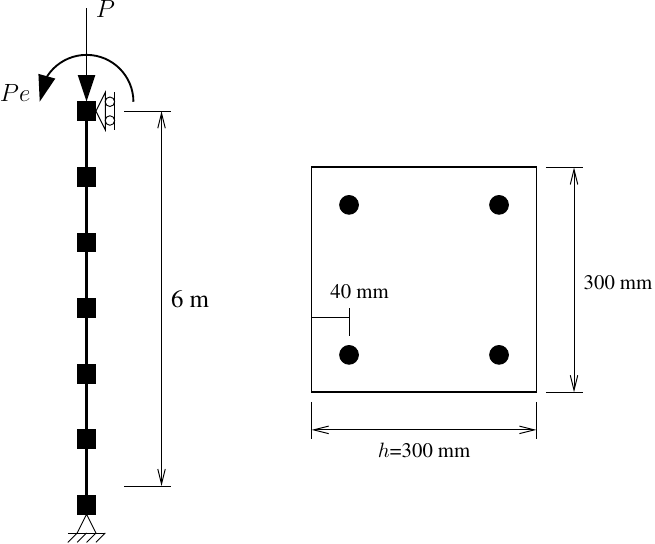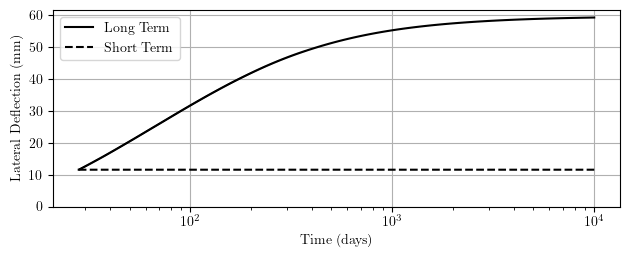OpenSees Cloud
OpenSees AMI
Long Term Column Loading
Original Post - 24 Nov 2024 - Michael H. Scott
Show your support at Buy Me a Coffee.
Practically all analyses of reinforced concrete columns in OpenSees assume the loading is short term–concrete as strong as it was at 28 days out of the hopper. Depending on what you’re doing, not accounting for long term load effects, i.e., concrete creep and shrinkage, may not be a big deal.
But the effects of creep and shrinkage can be important for the stability of slender reinforced concrete columns. As a large compressive load is sustained over many years, creep-induced strains can lead to increased deflections (no column is perfectly straight and no axial load is applied without some eccentricity). So, even though “P” is constant, “delta” increases over time, thereby amplifying second order “P-delta” effects.
Consider the column shown below with L/h=20 length to depth ratio. The section has the same material properties as in a previous post but with the section discretized into multiple concrete and steel fibers for flexure. The column is discretized into a corotational mesh of six displacement-based elements with nodes defined using an L/1000 out-of-straightness. The axial load is P=1000 kN with eccentricity e/h=0.25.

The eccentric axial load is held constant on the column for 10,000 days (about 30 years) and the concrete is allowed to creep. The lateral deflection at mid-height of the column is plotted below as a function of time using both short term and long term material models.

With short term material behavior, the deflection remains constant (as expected) at about 11 mm while the deflection increases to nearly 60 mm after 10,000 days when accounting for long term load effects. Although the rate of increase in long term deflection slows down as time goes on, the column second order moment increases by a factor of more than five from day 28 to day 10,000.
Additional analyses are required to determine the loss in column strength under long term loading. A post to that effect is on my long term to-do list.